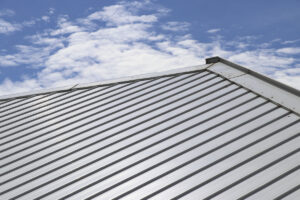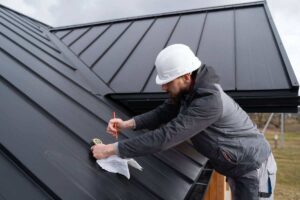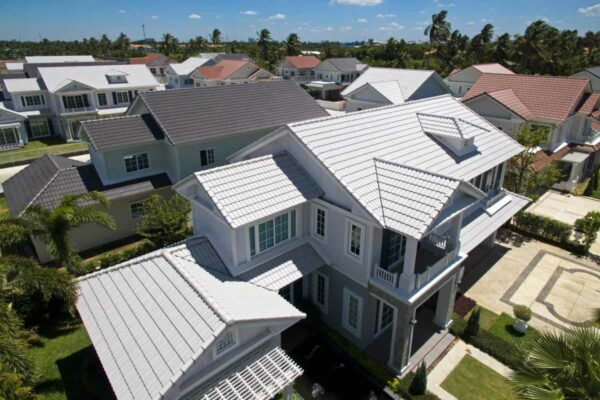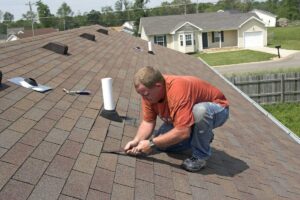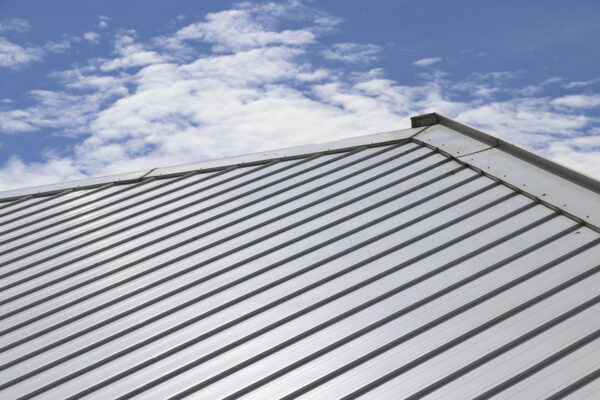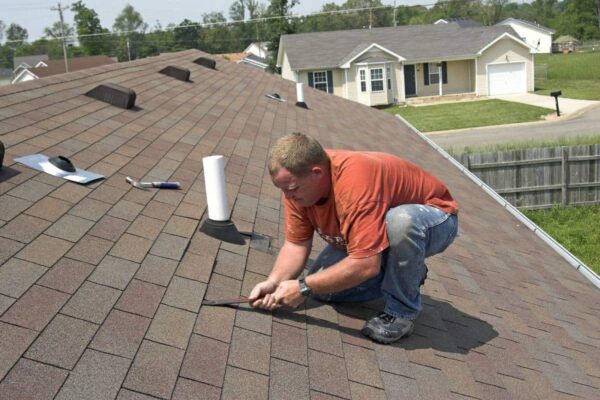Metal roofing is becoming an increasingly popular choice for homeowners and builders, thanks to its durability, longevity, and aesthetic appeal. What sets metal roofing apart from other materials is not just the material itself but also the various components that make up a complete metal roof system.
By understanding the seven crucial parts of metal roofing and their functionalities, homeowners can confidently choose a robust and reliable solution for protecting their property in any climate or conditions.
We’ll explore each element in detail, providing invaluable insights into why they are essential to a successful metal roof installation.
Whether you’re considering installing a metal roof or simply interested in learning more about this innovative building option, stay tuned as we delve into the intricacies of these vital components that ensure your home remains secure and stylish while benefiting from all that metal roofing has to offer.
The Anatomy of a Metal Roof
Metal roofing is gaining popularity among homeowners and builders due to its durability, long lifespan, and attractive appearance. However, what makes metal roofing unique is not only the material it’s made of but also the seven essential components that form a complete metal roof system.
Knowing each part and its purpose allows homeowners to make informed decisions when choosing a reliable solution for protecting their property under any climate or conditions.
The first part of a metal roof system is the panels themselves. These are the individual sheets that cover the roof surface and come in various sizes, shapes, colors, and gauges (thicknesses).
Underneath the panels lies another important component called underlayment. Acting as an extra layer of protection between the roof deck and panels.
Other parts like flashing (used around chimneys or vents) ensure watertightness at vulnerable areas while ridge caps provide enhanced ventilation for proper airflow along with an aesthetic finish.
Roof Panels: Your First Line of Defense
Roof panels are an essential component of a metal roof system, serving as the first line of defense against external elements. Consisting of durable metal sheets, these panels provide the primary layer of protection for your home or building. The quality and strength of roof panels determine how well your property will withstand harsh weather conditions such as heavy rain, snowfall, hailstorms, or even strong winds.
The main purpose of roof panels is to create a watertight barrier that prevents water from seeping into the underlying structure. This helps in avoiding costly damage caused by leaks and deterioration over time.
High-quality metal roof panels offer excellent resistance against fire, mold growth, rotting and pest infestation – ensuring long-term durability and reduced maintenance costs.
It is important to choose the right type of roofing panel depending on your specific needs and climate zone. Different materials such as steel or aluminum can be used to construct these panels with varying thicknesses and coatings available for enhanced performance.
Flashing: Sealing Vulnerable Areas
Flashing is one of the seven crucial parts of a metal roofing system that plays a significant role in sealing vulnerable areas. It is responsible for channeling water away from sensitive areas such as valleys, chimneys, skylights, and vents to prevent leaks and water damage. Flashing consists of thin pieces of metal that are installed at intersecting sections or protrusions in the roof.
Proper installation of flashing ensures that these vulnerable areas remain watertight by creating a barrier against moisture penetration. Flashing also serves as a protective layer against wind-driven rain and debris, which can easily find their way into gaps without adequate sealing.
To ensure long-term performance, it is essential to use high-quality materials and to hire professional installers who have expertise in effectively fitting flashings.
Investing in proper flashing installation not only enhances the overall performance and longevity of the metal roofing system but also provides homeowners with peace of mind knowing they are protected from potential water damage.
With its ability to seal vulnerable areas effectively, flashing ensures durability and weather resistance for years to come while maintaining the aesthetic appeal associated with metal roofing systems.
Ventilation: A Breath of Fresh Air
Ventilation is a vital component of any metal roofing system, providing a breath of fresh air for the structure beneath. This often-overlooked aspect ensures that the roof remains cool and well-ventilated, preventing moisture buildup and potential damage.
Proper ventilation helps to regulate temperature and reduce energy costs by allowing hot air to escape during warmer months.
There are several methods of ventilation available for metal roofs, including ridge vents, soffit vents, and gable vents. Ridge vents are installed along the peak of the roof to allow warm air to exit naturally while simultaneously drawing in cooler outside air.
Soffit vents are typically located under the eaves or overhangs of the roof and act as an intake vent for fresh air from outside. Gable vents are positioned on the upper portion of a gabled end wall and work similarly to ridge vents.
With proper airflow underneath, homeowners can enjoy improved indoor comfort levels while ensuring their investment in a durable metal roof lasts for years to come.
Insulation: Energy Efficiency
Insulation helps to reduce heat transfer between the interior and exterior of a building, keeping the space more comfortable and reducing the need for excessive heating or cooling. When properly installed, insulation can significantly improve energy efficiency and result in lower utility bills.
There are several types of insulation materials that can be used with metal roofing, including fiberglass, foam board, and reflective foil. Each type has its own advantages and disadvantages, so it’s important to consider factors such as cost, R-value (thermal resistance), moisture resistance, and fire safety when choosing the right insulation for your specific needs.
Insulation also provides soundproofing benefits by absorbing noise from outside sources such as rain or hail. This not only makes the indoor environment more peaceful but also helps to protect against potential damage caused by extreme weather conditions.
Gutter Systems: Managing Rainwater
Gutter systems play a vital role in managing rainwater and protecting the overall integrity of a metal roof. These systems are designed to collect and redirect rainwater away from the roof and foundation, preventing damage caused by pooling or excessive moisture.
By channeling the water properly, gutter systems help maintain a dry environment that reduces the risk of leaks, mold growth, and structural deterioration.
There are various components within a typical gutter system that work together to effectively manage rainwater. The gutters themselves are horizontal troughs installed along the edge of the roofline, collecting rainfall as it travels down the slope.
Downspouts then connect to these gutters to carry water vertically toward an appropriate drainage location, such as a drainpipe or underground storage tank.
Proper maintenance is essential for ensuring these components remain clear of debris like leaves and twigs so they can function optimally throughout all seasons.
Bastrop Roofers: Aiding With Comprehensive Roofing Solutions
Metal roofing consists of seven important components that work together to provide durability and protection for homes and buildings. We’ve explored each element in detail, ensuring homeowners have the necessary knowledge to make an informed decision about their roofing needs.
By understanding the functionality of each part, homeowners can confidently choose roofing contractors in Bastrop TX that will help with the metal roof system installation, withstanding various climate conditions and offer long-lasting performance. The durability of metal roofing combined with its aesthetic appeal makes it an increasingly popular choice among homeowners and builders.
With its longevity and resistance to extreme weather conditions, metal roofing provides a reliable solution for protecting properties. By investing in a complete metal roof system that includes all seven crucial components, homeowners can ensure their property is safeguarded from elements such as rainwater infiltration or wind damage.
Choosing a metal roofing solution offers peace of mind knowing that your property is securely protected while also enhancing its visual appeal. If you are looking for roof repair in Bastrop TX or a reliable installation service, don’t hesitate and contact Divided Sky Roofing & Solar today! Our team is one of the leading Bastrop roofing companies and is capable of reach all of your expectations and needs!


